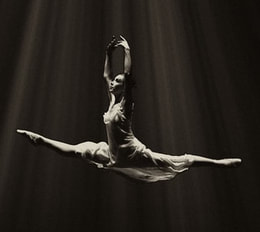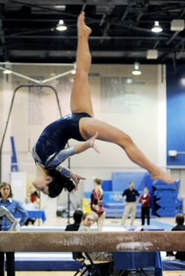 Dance is highly demanding and requires exceptional flexibility, balance, power, agility, coordination, and endurance. To properly execute movements, a dancer assumes positions that place excess stress on bones, muscles, tendons, and ligaments, thus leading to high injury rates. The injury incidence is reported to be as high as 5.6 per 1,000 dancing hours for pre-professional dancers, and 4.44 per 1,000 hours in a company of professional dancers (Allen et al, 2012). In comparison, the injury rate for elite gymnasts is 2.86 per 1,000 hours and 0.69 for novice gymnasts (Saluan et al, 2015). Gymnasts have a higher percentage of traumatic injuries, whereas 75% of the injuries sustained in dance are related to overuse. Overuse injuries are caused by repetitive movements/stress which can lead to micro-injury of the tissue that is being loaded. If the injury rate exceeds the rate of healing/repair, the tissue can become damaged (Sephton, 1998). The majority of dancers are fatigued at the time an injury occurs. This is because fatigue compromises muscle performance, coordination, joint stability, and neural feedback (Liederbach 2012). Overuse injuries tend to be more severe in nature and result in more dance time lost. Lower leg injuries are reported to be between 66 and 78% of the injuries, whereas foot/ankle injury comprises 14 to 57% of all injuries among dancers. Injuries sustained during class and performances are more severe than injuries that occur during rehearsals (Allen 2012). Common risk factors for injury include:
References: 1.Allen, N. Nevill, A. Ballet Injuries: Injury Incidence and Severity over 1 Year. Journal of Orthopaedic and Sports Physical Therapy. Vol 42, number 9, September 2012. 781-790. 2.Saluan, Paul et al. “Injury Types and Incidence Rates in Precollegiate Female Gymnasts: A 21-Year Experience at a Single Training Facility.” Orthopaedic Journal of Sports Medicine 3.4 (2015): 2325967115577596. PMC. Web. 4 Feb. 2018. 3.Sephton, Sharlene. "Foot Injuries in Dancers." ADVANCE for Physical Therapy and Rehab Medicine (1998) Web. 4 Feb. 2018. 4.Liederbach, Marijeanne. "Epidemiology of Injuries in Dance: Biopsychosocial Considerations." Principles of Dance Medicine: Clinical Management of the Dancer Patient. July 12, 2012, New York University Langone Medical Center. 2012. Print. 5. Russell, J. A. (2013). Preventing dance injuries: current perspectives. Open access journal of sports medicine, 4, 199. 6. Allen, N., Ribbans, W. J., Nevill, A. M., & Wyon, M. A. (2014). Musculoskeletal injuries in dance: a systematic review. Int J Phys Med Rehabil, 3(252), 2
0 Comments
|
CategoriesAll Cross Training Injury Prevention Nutrition Recipes Wellness Archives
October 2021
|

 RSS Feed
RSS Feed